Vietin Bank Bundle
Who Really Owns VietinBank?
Unraveling the Vietin Bank SWOT Analysis is just the beginning; understanding its ownership structure is key to grasping its strategic direction. From its inception as Incombank to its current status, VietinBank's ownership has evolved significantly. This evolution reflects a fascinating interplay of government influence, strategic partnerships, and public participation.
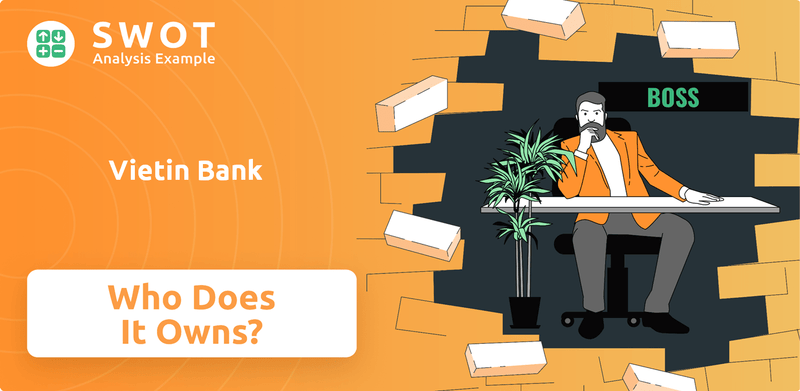
The VietinBank ownership structure, a blend of state control and market-oriented dynamics, is crucial for investors and analysts alike. Understanding the VietinBank shareholders and the VietinBank parent company is vital for assessing its market position and future prospects. This deep dive into VietinBank history and its current VietinBank structure offers essential insights for informed decision-making, revealing how ownership shapes the bank's performance and its response to the competitive Vietnamese financial landscape. The VietinBank stock performance is directly linked to the ownership dynamics.
Who Founded Vietin Bank?
The initial establishment of VietinBank, formerly known as Incombank, in 1988 marked its beginning as a state-owned entity. This structure meant the Vietnamese government, through the State Bank of Vietnam, held complete ownership. Therefore, the concept of individual founders with equity stakes did not apply in the traditional sense.
As a state-owned enterprise, VietinBank's early operations and strategic direction were entirely governed by the policies and directives of the Vietnamese government. The State Bank of Vietnam acted as the sole owner, providing the initial backing and overseeing the institution's activities. This model was designed to support the government's economic development goals.
The absence of individual founders with equity and the centralized ownership structure meant that agreements such as vesting schedules or buy-sell clauses, common in private companies, were not relevant. The government's control ensured that the bank's vision was aligned with national economic objectives, focusing on supporting industrial and trade activities.
The primary owner of VietinBank was the State Bank of Vietnam, representing the government. The initial ownership structure was straightforward, with no individual shareholders. The bank's structure was designed to support the nation's economic goals.
- The Growth Strategy of Vietin Bank was intrinsically linked to the government's economic development plans.
- There were no initial ownership disputes or buyouts due to the centralized government ownership.
- The focus was on supporting industrial and trade activities across Vietnam.
- The government's influence was paramount in setting the bank's strategic direction.
Vietin Bank SWOT Analysis
- Complete SWOT Breakdown
- Fully Customizable
- Editable in Excel & Word
- Professional Formatting
- Investor-Ready Format
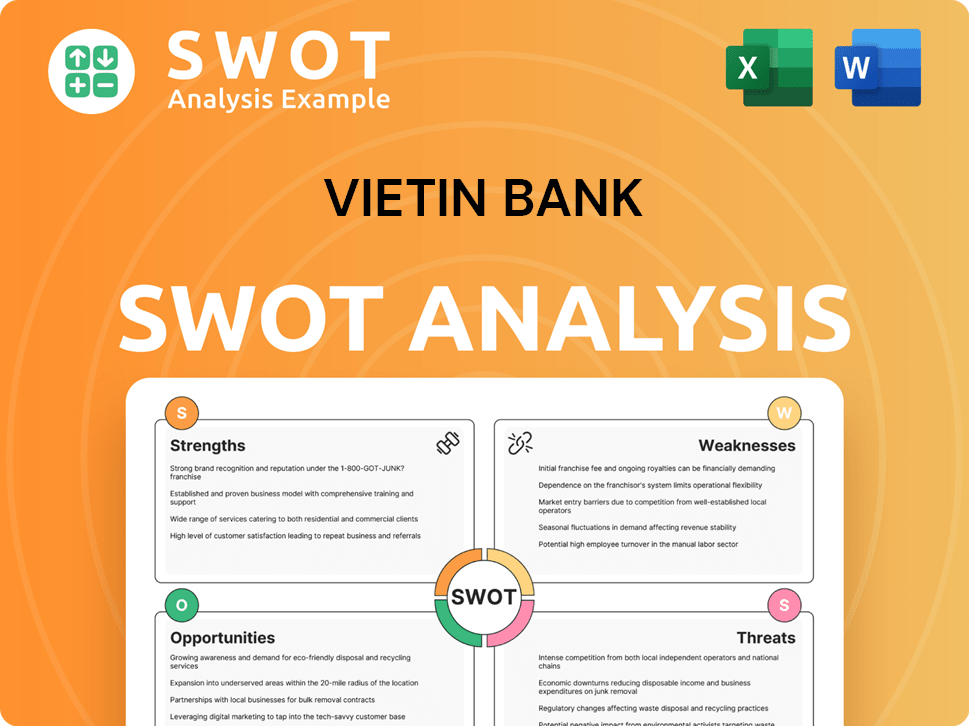
How Has Vietin Bank’s Ownership Changed Over Time?
The evolution of VietinBank's ownership reflects Vietnam's economic reforms and its integration into the global financial system. Initially, VietinBank operated as a wholly state-owned entity. A significant shift occurred on July 16, 2009, with its initial public offering (IPO), marking the beginning of its partial privatization. This IPO was a pivotal step in modernizing the banking sector and attracting foreign investment, reshaping the VietinBank structure.
The VietinBank history is marked by strategic partnerships and changes in ownership. The IPO was a crucial event, allowing the bank to raise capital and broaden its shareholder base. The entry of MUFG Bank, Ltd. in 2013, as a major shareholder, further transformed the bank, bringing in foreign capital and expertise. These changes have influenced the bank's corporate governance, transparency, and adherence to international standards. Understanding the VietinBank ownership is essential for grasping its strategic direction and operational dynamics.
| Event | Date | Impact |
|---|---|---|
| IPO | July 16, 2009 | Partial privatization, raised capital, broadened shareholder base. |
| MUFG Bank Investment | 2013 | Strategic partnership, foreign capital, enhanced corporate governance. |
| Ongoing Ownership Adjustments | Various | Reflects market dynamics, investor interest, and strategic goals. |
As of December 31, 2024, the State Bank of Vietnam remains the largest shareholder, owning approximately 64.46% of VietinBank. MUFG Bank holds around 19.73%, making it another significant stakeholder. The remaining shares are held by a mix of institutional investors, individual shareholders, and other entities. This ownership structure indicates a balance between state influence and private investment, shaping the bank's strategy and operations. The VietinBank shareholders include a diverse group of domestic and foreign investors. The VietinBank parent company is the State Bank of Vietnam.
The ownership structure of VietinBank is a blend of state control and private investment.
- The State Bank of Vietnam is the largest shareholder.
- MUFG Bank is a significant strategic investor.
- The IPO and subsequent partnerships have modernized the bank.
- Understanding the ownership breakdown is crucial for investors.
Vietin Bank PESTLE Analysis
- Covers All 6 PESTLE Categories
- No Research Needed – Save Hours of Work
- Built by Experts, Trusted by Consultants
- Instant Download, Ready to Use
- 100% Editable, Fully Customizable
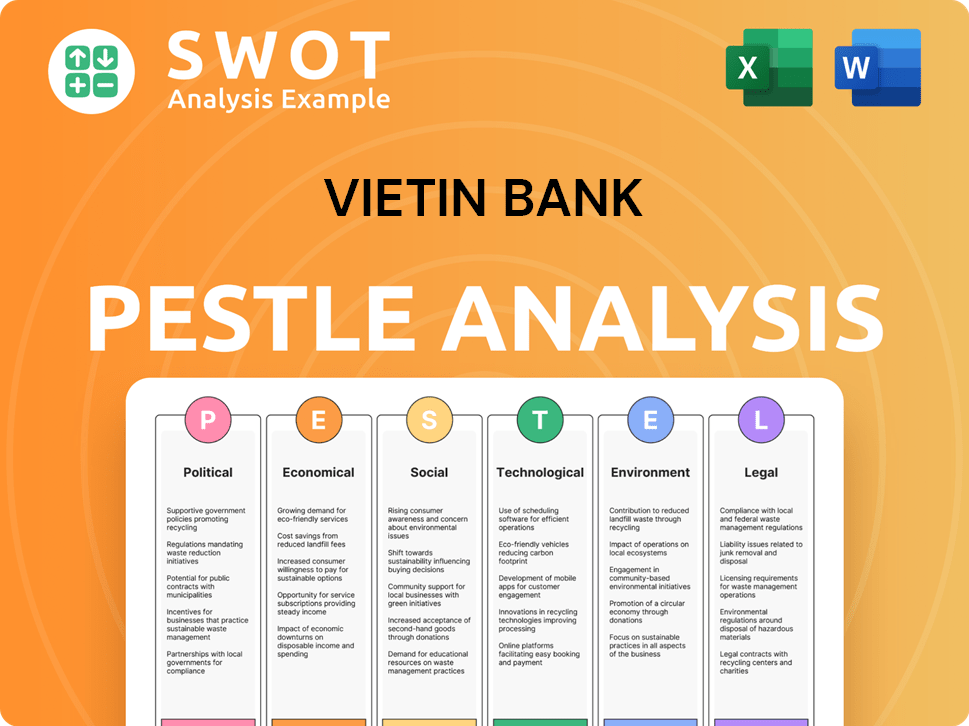
Who Sits on Vietin Bank’s Board?
The Board of Directors of VietinBank, as of early 2025, is structured to reflect its ownership, with representatives from key shareholders. The State Bank of Vietnam, the primary shareholder, holds a significant presence on the board, ensuring alignment with government policies. MUFG Bank, a strategic investor, also has board representation, contributing to strategic decisions and risk management. This composition balances state influence with international best practices, enhancing transparency and market-oriented principles.
The board's composition is a critical aspect of VietinBank's governance. The presence of both state and strategic investors shapes the bank's direction. The board's decisions are crucial for the bank's strategic planning, risk management, and overall financial performance, reflecting the diverse interests of its shareholders. The board's effectiveness is key to navigating the balance between state directives and shareholder value.
| Board Member | Role | Shareholder Representation |
|---|---|---|
| Representative 1 | Chairman/Director | State Bank of Vietnam |
| Representative 2 | Director | MUFG Bank |
| Representative 3 | Independent Director | N/A |
The voting structure at VietinBank generally follows a one-share-one-vote principle. However, the State Bank of Vietnam's substantial ownership gives it significant control over major decisions. This includes the appointment of key executives, approval of strategic plans, and significant capital allocations. This structure reflects the Brief History of Vietin Bank and its evolution.
The State Bank of Vietnam is the primary shareholder, ensuring significant influence. MUFG Bank, as a strategic investor, also has a notable presence. The board's composition balances state directives with international best practices.
- Understanding VietinBank's ownership structure is key for investors.
- The government's stake provides de facto control over major decisions.
- The board's dynamics reflect a balance between state and shareholder interests.
- The voting structure generally follows a one-share-one-vote principle.
Vietin Bank Business Model Canvas
- Complete 9-Block Business Model Canvas
- Effortlessly Communicate Your Business Strategy
- Investor-Ready BMC Format
- 100% Editable and Customizable
- Clear and Structured Layout
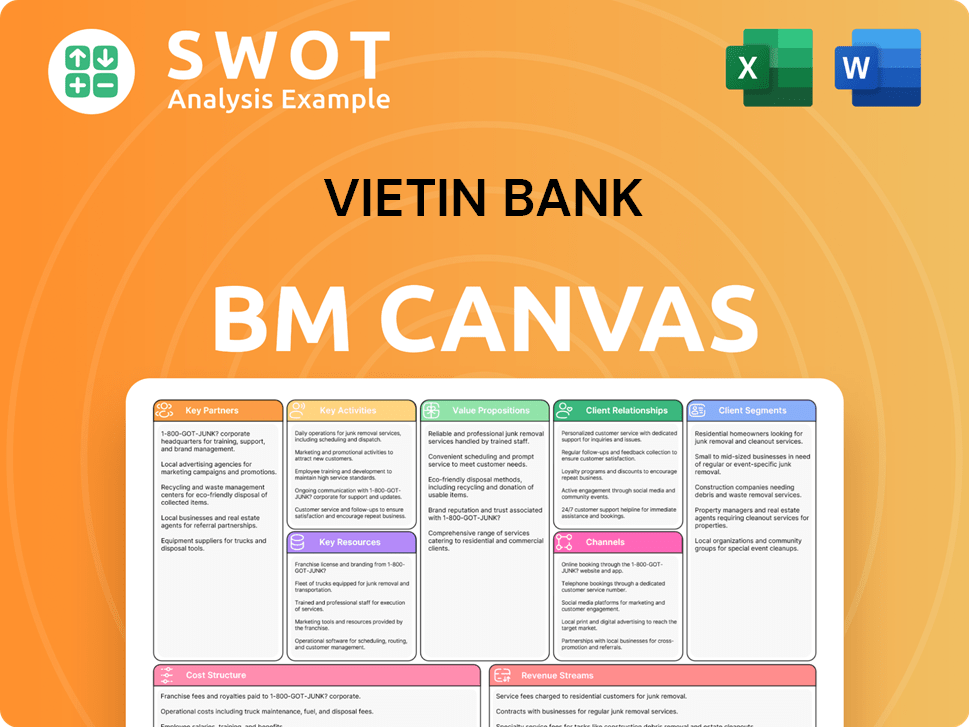
What Recent Changes Have Shaped Vietin Bank’s Ownership Landscape?
In the past 3-5 years, the VietinBank ownership structure has remained relatively stable, with the State Bank of Vietnam maintaining its majority stake. MUFG Bank continues to be a significant strategic investor. The bank has focused on strengthening its capital adequacy and improving asset quality, impacting shareholder value and investor confidence. These efforts are part of a broader strategy to enhance the bank's financial health and attract further investment.
Industry trends in Vietnam's banking sector point towards increasing institutional ownership and a push for greater transparency. While founder dilution is a common trend, in VietinBank's case, the 'founder' is the state. There have been discussions about further divestment by the government in state-owned enterprises, including banks, but significant changes in VietinBank's state ownership haven't materialized rapidly. This reflects the government's cautious approach to privatization, balancing economic objectives with financial stability.
| Key Aspect | Details | Impact |
|---|---|---|
| State Bank of Vietnam | Maintains majority ownership | Ensures government influence and stability |
| MUFG Bank | Significant strategic investor | Provides international expertise and capital |
| Capital Adequacy | Ongoing improvements | Enhances financial health and investor confidence |
Looking ahead, VietinBank's commitment to sustainable growth and improving shareholder returns is evident in public statements. While no immediate plans for significant changes in the core ownership structure have been announced, the Vietnamese government's long-term vision suggests a potential for further gradual divestment. Such moves would be carefully managed to maintain financial stability and align with national economic objectives. For more insights, consider exploring the Growth Strategy of Vietin Bank.
The core VietinBank shareholders have remained consistent, with the State Bank of Vietnam holding the largest stake. This stability provides a solid foundation for the bank's operations and strategic planning.
As a state-owned enterprise, the government continues to exert significant influence over VietinBank's structure and strategic direction. This influence is a key factor in the bank's operations.
The partnership with MUFG Bank continues to be crucial, offering international expertise and capital. This collaboration supports VietinBank's growth and expansion initiatives.
The long-term vision includes potential gradual divestment, aiming to enhance efficiency. Any changes will be carefully managed to ensure financial stability and align with national economic goals.
Vietin Bank Porter's Five Forces Analysis
- Covers All 5 Competitive Forces in Detail
- Structured for Consultants, Students, and Founders
- 100% Editable in Microsoft Word & Excel
- Instant Digital Download – Use Immediately
- Compatible with Mac & PC – Fully Unlocked
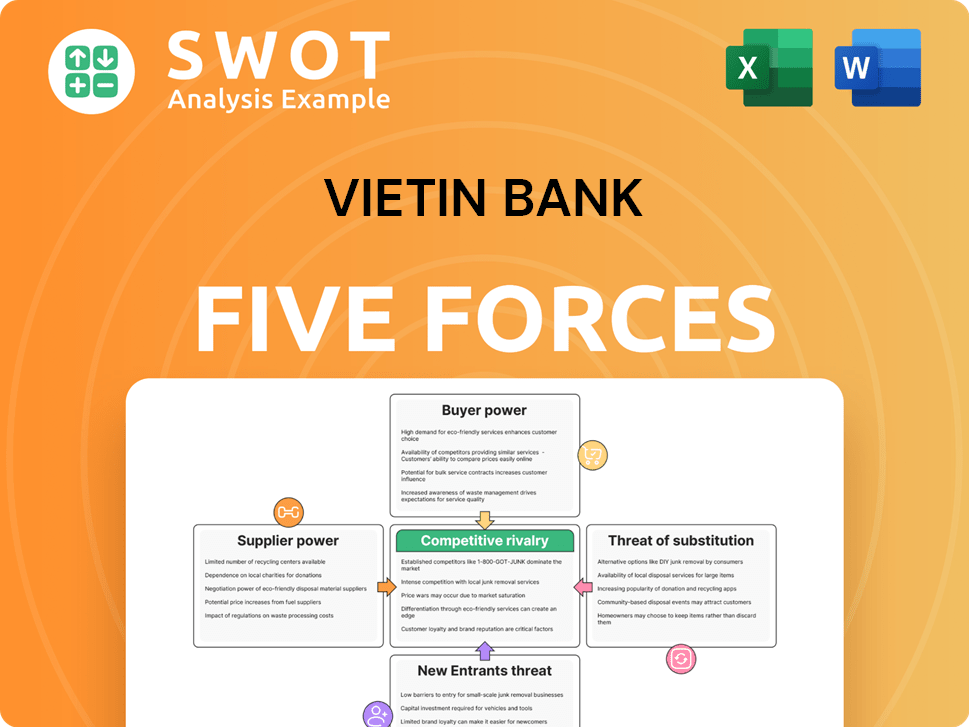
Related Blogs
- What are Mission Vision & Core Values of Vietin Bank Company?
- What is Competitive Landscape of Vietin Bank Company?
- What is Growth Strategy and Future Prospects of Vietin Bank Company?
- How Does Vietin Bank Company Work?
- What is Sales and Marketing Strategy of Vietin Bank Company?
- What is Brief History of Vietin Bank Company?
- What is Customer Demographics and Target Market of Vietin Bank Company?
Disclaimer
All information, articles, and product details provided on this website are for general informational and educational purposes only. We do not claim any ownership over, nor do we intend to infringe upon, any trademarks, copyrights, logos, brand names, or other intellectual property mentioned or depicted on this site. Such intellectual property remains the property of its respective owners, and any references here are made solely for identification or informational purposes, without implying any affiliation, endorsement, or partnership.
We make no representations or warranties, express or implied, regarding the accuracy, completeness, or suitability of any content or products presented. Nothing on this website should be construed as legal, tax, investment, financial, medical, or other professional advice. In addition, no part of this site—including articles or product references—constitutes a solicitation, recommendation, endorsement, advertisement, or offer to buy or sell any securities, franchises, or other financial instruments, particularly in jurisdictions where such activity would be unlawful.
All content is of a general nature and may not address the specific circumstances of any individual or entity. It is not a substitute for professional advice or services. Any actions you take based on the information provided here are strictly at your own risk. You accept full responsibility for any decisions or outcomes arising from your use of this website and agree to release us from any liability in connection with your use of, or reliance upon, the content or products found herein.